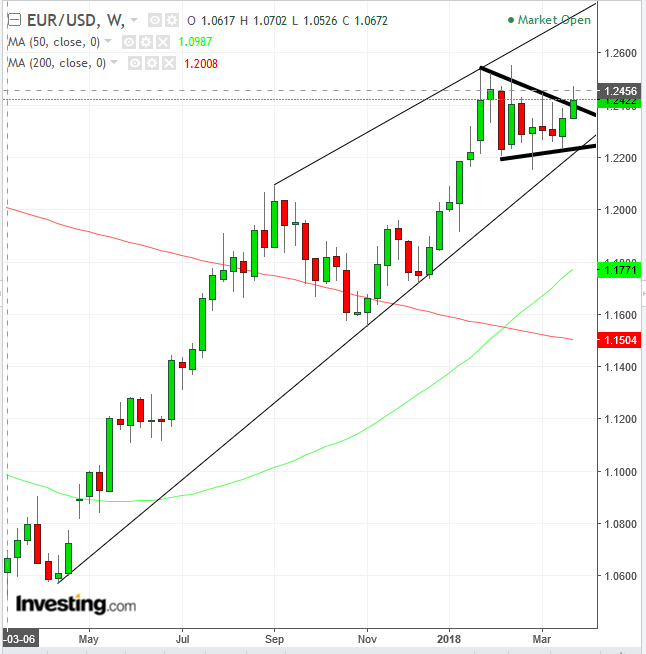China, Central Banks Weigh On USD
The US dollar is on course to get clobbered by two serious heavy weights: China and global central banks.
China has launched oil futures contracts denominated in yuan, its first commodity trading vehicle open to foreign investors. The Wall Street Journal characterized the move as, among other things, "part of China's drive to turn its currency into a global force in markets."
As the world’s biggest oil consumer, China also has a massive impact on oil prices. Increased demand for the Chinese currency will come at the expense of demand for American dollars. This reduced need for the greenback will cause a ripple throughout US markets. Foreign oil exports generally invest their dollar proceeds in US assets, including Treasuries, a key source for US financing of its deficit. However, if foreign oil exports are being paid for in another currency, it could make more sense to invest in that currency.
In other negative news for the dollar, global central bankers may be fed up with President Donald Trump’s high-stakes trade poker game with China. Central bankers world-wide are reportedly considering shifting some of their foreign exchange reserves from dollars to euro. This too would create reduced demand for the dollar.
Despite these two drivers weighing on the USD, the global reserve currency is currently bouncing on hopes that negotiations will keep all parties off the trade battlefield. Should the talks succeed, growth will resume, sentiment will improve and perhaps central bankers won’t need to shift currency reserves.
Nevertheless, the euro-dollar pair is trading along a pattern in which demand overcomes supply.

Since January, the pair has been consolidating within a symmetrical triangle. This pattern demonstrates that both supply and demand are willing to accept continuously worse prices relative to their position. Buyers are willing to keep paying more, and sellers accept ever lower bids. This means that both believe the pair will continue to move in a direction that would justify their accepting prices that are worse than previous levels.
This week’s trading is struggling with an upside breakout, which would signal that demand has absorbed all available supply at these levels and must go higher for more. This behavior generally forces bears to cover shorts, increasing demand. It also recruits more bulls, who recognize that the prevailing uptrend since mid-April is set to resume.
The 50-week MA crossed above the 200-week MA mid-February and throughout the development of the triangle. This demonstrates that price momentum was on the upside, even during the consolidation.
Trading Strategies – Long Position Setup
Conservative traders would wait for a new high above the mid-January, 1.2538 peak, to confirm the uptrend’s integrity. This would also include a decisive breakout of over 1.3 percent. They would wait for a 3.00 percent filter, to avoid bull traps and its likely return move, to confirm the pattern’s integrity, with a green candle covering the preceding red candle’s real body.
Moderate traders might be satisfied with a 2.00 breakout, which would also post a new high. They may wait for a return move for a better entry point, but not necessarily for confirmation of the triangle’s support.
Aggressive traders may be happy with just a 1 percent penetration, taking the price above the 1.2500 psychological level, providing they can afford a meaningful stop loss, preferably below the triangle top, below 1.24, or the capital risk.
The symmetrical triangle’s implied target is 1.2700
